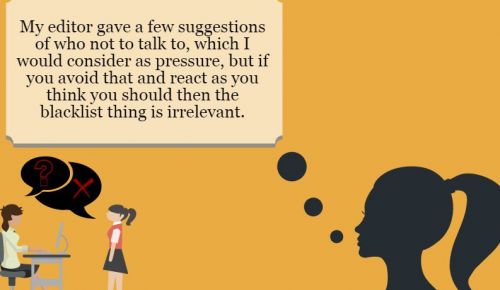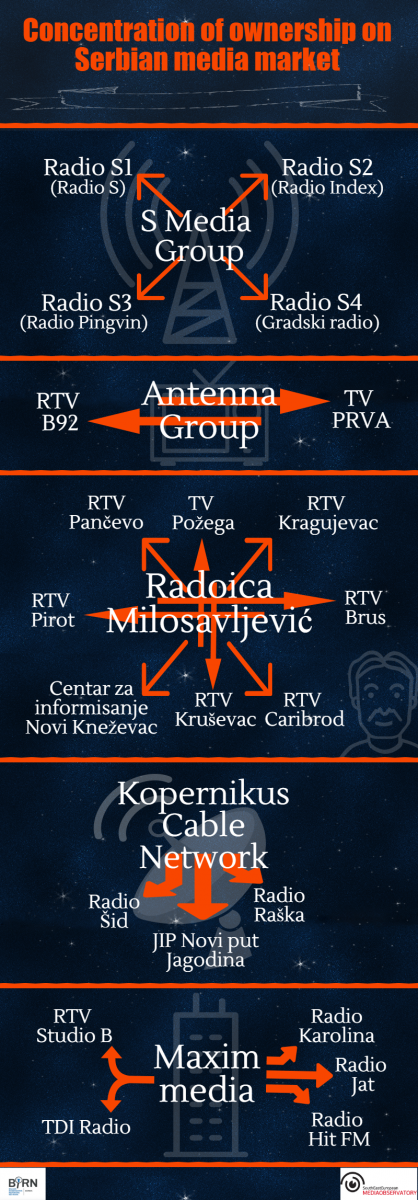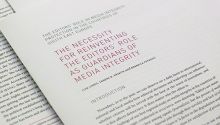State funding for media, misused for rewarding loyalty to the government, is a powerful tool of influence. Media are put in a position of dependence, under which the soft censorship grows.
BIRN Serbia produced two reports in 2014 and 2016 on practices of soft censorship in Serbia, mapping budgetary spending models and their influences on editorial independence and journalists’ autonomy. Reports conclude that Serbian national and local governments use media outlets’ financial vulnerability to influence news coverage and shape the broader media landscape.
The latest, 2016 report “Soft censorship, Changes in media sector - from bad to worst” (supported by the SEE Media Observatory project, available in Serbian language here) documents the further decline in media freedoms, while necessary reforms and improvements of the legal framework are not producing expected results.
MEDIA MAP: LESS FREEDOMS, MORE PRESSURES
Legal setting and overall environment in Serbia are not ensuring development of free and pluralistic media. Media market is underdeveloped and advertising revenues are shrinking by the year – reaching as little as 156 million EUR in 2013 and 2014, a significant drop comparing to 176-172 million EUR in the period 2010-2012. This further pushes media towards government budgets, as the most desirable source of financing.
Available data regarding state funding to media and state advertising budgets are often sparse and incomplete. The lack of transparency and record-keeping remains a severe challenge in assessing the full extent and impact of soft censorship in Serbia.
In February 2015, the Anti-Corruption Council of the Government of the Republic of Serbia issued an analysis detailing various mechanisms of control over media through budgetary means in the period 2011-2014. It found that over these years, political parties continued to misuse their influence and public resources to “discipline” media, editors and journalists. Hidden or direct media control based on state financing, the Council found, is done regularly at all levels of the government.
In 2015, media scene in Serbia has undergone several changes, but none ensured crucial reforms in the sector: new media legislation did not provide expected results - the process of media privatization was accompanied by a number of abuses; public tenders for production of media content were marked by a number of inconsistencies; the privatization process has additionally aggravated conditions on the media market and has led to a new type of concentration; censorship, self - censorship and the numerous restrictions of editorial independence are on the rise.
Source: BIRN
NEW BUGDETARY MODELS, OLD PRACTICES
BIRN report, which is based on anecdotal evidence and data collected using FOI requests, mapped 4 dominant models of state intervention in media sector: public tenders, public procurements, direct payments and subsidies. State monies are used to support/co-finance media projects, to purchase media services, as well as for the state advertising (advertising of governments, their activities and/or public companies in state ownership); and support to media owned by the state. The latter model is no longer in practice and it ended with media privatization process. The 2014 media legislation, Law on Public Information and Media, forbids this type of financing.
The same legislation also stipulates that all giving to media must be treated as state aid, in a manner that doesn’t interfere with fair market competition.
2014 Law on Public Information and Media stipulates that all state funding of media should go through procedures of public tenders. As such, public tenders are the most important novelty and the biggest step forward in the current legislative framework. Since the application of new law, some 200 public tenders were published, aimed for supporting production of quality media content – 148 in 2015 and 56 in first two months in 2016. Total value of these tenders is over 1 billion dinars (approximately 8 million EUR).
Source: BIRN
Although this is in theory the best model, many problems have been noted in its implementation and the key issue is practice where decision-makers and executive authorities are deliberately circumventing the law, so that old practice of favouring "friendly" media is maintained.
For example, BIRN monitoring shows that the privatized media still get disproportionately large amount of budgetary money, "winning" in the tenders more than other media. They are, in certain competitions, getting from 50 % to 80 % of all the money earmarked at the public tenders (cases of the city of Belgrade, Nis, Krusevac, Novi Pazar).
Additional problem related to public tenders is the lack of necessary skills and capacities in local government units to implement this type of financing. Misunderstanding the concept of public interest, corrupted commissions, unclear criteria and lack of evaluation of achieved –are all burdening the implementation of the public tenders in 2015 and beginning of 2016. Only in 2015, Media Coalition which is the only consortium monitoring the application of public tenders in all 166 local self-governments, had to publicly react to almost every third public tender.
SOFT CENSORSHIP AND JOURNALISTIC FREEDOMS
Rattled financial position of media has strong impact on journalists, their professional ethics and increased self-censorship, which is clearly manifested in in-depth interviews BIRN conducted with journalists and editors working in local, regional and national media outlets across Serbia, who are faced with numerous restrictions of their integrity and independence on daily basis.
For the purpose of this research BIRN developed a questionnaire that examines two dominant levels of soft censorship. The institutional level involves pressure coming from state structures, media owners and advertisers, and individual level related to specific experiences of journalists and patterns of behaviour deriving from economic pressures.
Source: BIRN
Results of interviews clearly point to the strong links between the media owners and the political elite and confirm the importance of government money for the survival of the media, especially noticeable at the local level. Moreover, journalists’ replies also suggest that the influence of politics on the editorial policies is direct, constant and all-pervading.
The majority of respondents do not see the project-based funding as an opportunity for additional funding for quality content, investigative stories or series of programs. Quite the contrary, media outlets that are receiving state funding are attuning their editorial policies to the government interests. This is illustrated by the position of one interviewee, "We know what we cannot do, and what not. Even if we have some idea, we are quickly giving up on them."
Source: BIRN
BIRN's respondents also believe that the management structures (managers of departments of advertising and marketing directors or certain sectors) play a key role in soft censorship. Economic pressures are transmitted along the chain of command from the manager through editors to journalists.
In the end, this is creating a twisted code of journalism which is not serving the public interest, but the political affiliates.
The research is done as a part of project supported by SEE Media Observatory, under the granting scheme for media advocacy actions by civil society organizations. The content of the article is the sole responsibility of the author and can in no way be taken to reflect the views of the European Union.
 State funding for media, misused for rewarding loyalty to the government, is a powerful tool of influence. Report and infographics by BIRN.
State funding for media, misused for rewarding loyalty to the government, is a powerful tool of influence. Report and infographics by BIRN.







